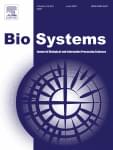A strategy for investigating consciousness that has proven very productive has focused on comparing brain processes that are accompanied by consciousness with processes that are not. But comparatively little attention has been given to a related strategy that promises to be even more fertile. This strategy exploits the fact that as individuals develop, new classes of brain processes can transition from operating ‘in the dark’ to becoming conscious. It has been suggested that these transitions occur when a new class of brain processes becomes object to a new, emergent, higher-level subject. Similar transitions are likely to have occurred during evolution. An evolutionary/developmental research strategy sets out to identify the nature of the transitions in brain processes that shift them from operating in the dark to ‘lighting up’. The paper begins the application of this strategy by extrapolating the sequence of transitions back towards its origin. The goal is to reconstruct a minimally-complex, subject-object subsystem that would be capable of giving rise to consciousness and providing adaptive benefits. By focusing on reconstructing a subsystem that is simple and understandable, this approach avoids the homunculus fallacy. The reconstruction suggests that the emergence of such a minimally-complex subsystem was driven by its capacity to coordinate body-environment interactions in real time e.g. hand-eye coordination. Conscious processing emerged initially because of its central role in organising real-time sensorimotor coordination. The paper goes on to identify and examine a number of subsequent major transitions in consciousness, including the emergence of capacities for conscious mental modelling. Each transition is driven by its potential to solve adaptive challenges that cannot be overcome at lower levels. The paper argues that mental modelling arose out of a pre-existing capacity to use simulations of motor actions to anticipate the consequences of the actions. As the capacity developed, elements of the simulations could be changed, and the consequences of these changes could be ‘thought through’ consciously. This enabled alternative motor responses to be evaluated. The paper goes on to predict significant new major transitions in consciousness.
